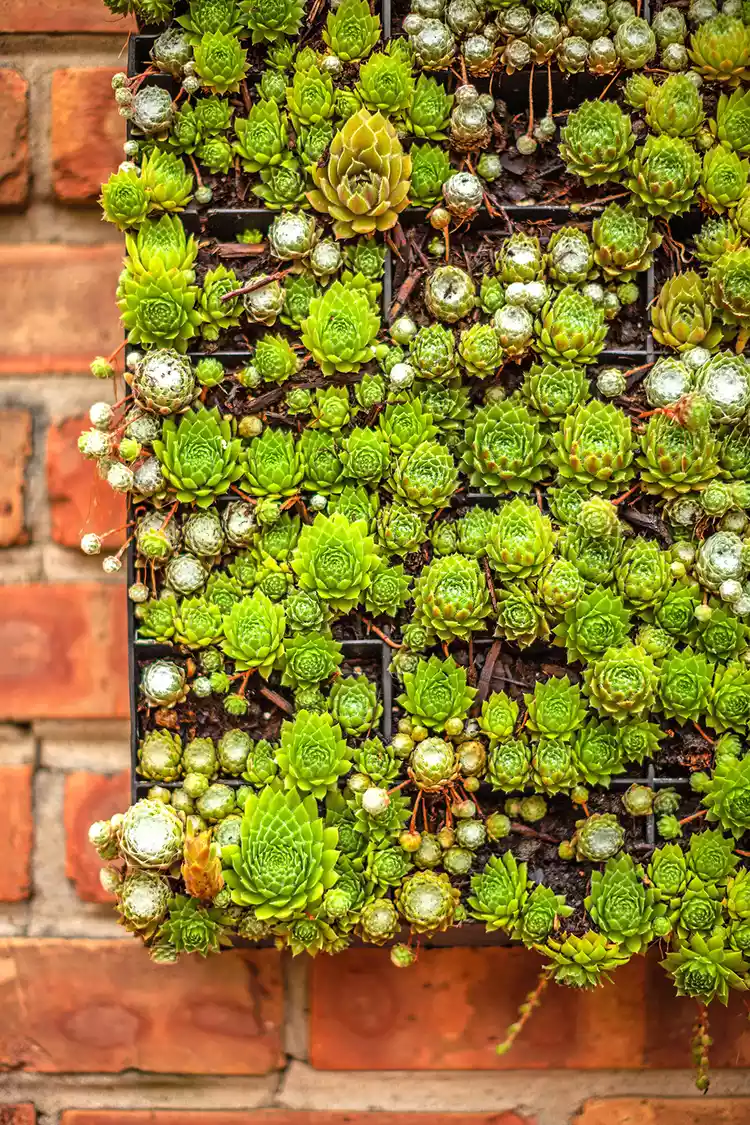Everything You Need to Know About Succulent Care

Succulents are trendy plants that come from arid areas around the world. A huge advantage of succulents is that they're able to retain water in their thick, fleshy leaves and stems. The plants (mostly perennial) come in a seemingly endless selection of sizes, shapes, and colors, and can adapt to many different types of growing conditions. They also require very little care, making them a no-fail plant option both indoors and outdoors. There are, however, a few things to keep in mind when taking care of succulents to be sure they live their best lives.
What Is a Succulent?
Sometimes, in the world of gardening, terminology can be a little messy. For example, any plant, usually from an arid climate, that has fleshy leaves and stems to store water is considered a succulent. This includes cacti, sedum, aloe, agave, echeveria, sempervivum, crassula, kalanchoe, and hundreds of other species. However, most gardeners use the term succulent to only include species with fleshy leaves. Any plant with spines is called a cactus, even though all of these plants fall under the succulent umbrella.
How Often to Water Succulents
Unlike some other perennials, soil and watering requirements for succulents are less stringent. In fact, succulents thrive on a bit of neglect.
Succulents will not thrive if water-logged. Your best bet is to pot them in a container that offers good drainage or pick a good spot in the garden that never gets wet. Water succulents about once a week during the growing season, but let them dry out completely between watering sessions and never get the soil soggy. If you live in a climate where the succulents go dormant during cooler weather, you can increase the amount of time between watering sessions. However, when caring for succulents indoors, you may need to maintain a consistent watering schedule.
Succulent Soil
Whether you make your own succulent soil or buy premixed versions, remember: Succulents need moisture but hate oversaturation. Choose a potting mix created specifically for succulents; if you don't have one, mix existing potting soil with sand or a handful of small pebbles or stones to create a more porous growing medium for your succulents.
How to Take Care of Succulents
In addition to proper succulent soil and good watering practices, succulents require two more things to survive: sun and fertilizer.
Sun: Succulents require at least 6–8 hours of full sun a day.
Fertilizer: Give succulents fertilizer in spring. Use a balanced fertilizer with equal proportions of nitrogen, phosphorous, and potassium.
Once established, most succulent plant care is minimal. But a few taller varieties, such as 'Autumn Joy', need to be trimmed back in the fall or early spring.
Hardy Succulents vs. Tropical Succulents
Check the plant label before you add any succulents to your landscape. Some succulents are rock-solid landscape performers in northern gardens, while others prefer a warmer climate. Use tender succulents in frost-free regions or as houseplants during the winter.
Gardening with Succulents
Succulents attract gardener types because of their quirky good looks and flexibility in the garden. Succulents woo decorator types because of their interesting shapes, colors, and textures. They are attractive to first-time gardeners, too, because they are so easy to care for and look great with very little attention.
Containers: Succulents can live happily in the contained world of a low bowl or pot. The only requirement is that there are drainage holes in the container so water can drain away from the roots of these plants. Pack a variety of succulents together to make a mosaic of color.
Gardens: Succulents can solve problems in many landscapes. Use low-growing types such as 'Dragon's Blood' as a ground cover in sunny open areas. Some sedums can even take a little shade.
Indoors: Succulent care indoors is very low maintenance, but needs to be more regular. How to care for succulents indoors—place them in a place with bright, direct sunlight and only water them once their soil has dried out. Depending on the moisture and humidity in your home, that could be every week, every two weeks, or even just once a month. Monitor your plant's soil for the first few months to determine a watering schedule.
Specialty Gardens: Small specimens can be used to make wreaths and are ideal for vertical gardens and green roofs.